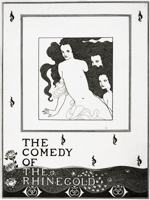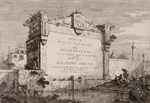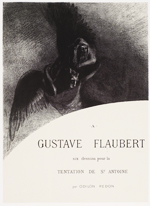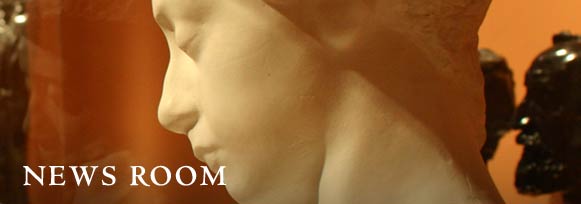Exhibition Shows the Evolution of Title Page Illustrations with Works by William Morris, Giovanni Battista Piranesi, Odilon Redon, James McNeill Whistler, and Others.
Illustrated Title Pages: 1500 – 1900
April 13 – October 16, 2011
Stanford, California — The Cantor Arts Center at Stanford University announces an exhibition of more than 60 illustrated title pages from its own collection with loans of some 20 books from Stanford University Library’s Special Collections. Included are editions of the Bible and title pages from works by Aristotle, Chaucer, Dante, and Vasari. The exhibition traces the development of the title page, its evolving printmaking techniques, increasingly complex layouts, and typographic variations. “Illustrated Title Pages: 1500 – 1900” opens April 13 and continues through October 16. Admission is free.
The range of works on display “give the viewer a chance to see prints that focus on the interface of word and image,” said the exhibition's curator, Betsy Fryberger. “These are very different in character and intent from other illustrations in books or portfolios.” The exhibition features the work of diverse artists such as Pierre Bonnard, Francis Frith, Francisco José de Goya, William Morris, Giovanni Battista Piranesi, and James McNeill Whistler, and includes an edition of Morris's masterwork, the Kelmscott Chaucer.
Initially, title pages offered little more than information about a book's title and author. However, during the 16th century, title pages became increasingly embellished with decorative borders framing the text, a practice that continued into the 17th century. In the 18th century, Italian printmaker Piranesi published portfolios of etchings with elaborately illustrated title pages, but by the early 19th century the industrial revolution brought substantial change to the production of prints and books. Newer title page techniques included lithography and wood engraving and, after 1850, photography. By the end of the 19th century, artists such as Aubrey Vincent Beardsley, Odilon Redon, and Morris had created personal and innovative title pages. However, as publishers moved towards producing larger editions in the 20th century, the role of the illustrated title page was diminished.
“Illustrated Title Pages” is made possible by support from the Halperin Exhibitions Fund.
An additional exhibition focusing on books this season is “The Art of the Book in California: Five Contemporary Presses,” on view at the Cantor Arts Center June 1 – August 28, featuring works that exemplify the book arts in California today.
# # #
VISITOR INFORMATION: Cantor Arts Center is open Wednesday – Sunday, 11 am - 5 pm, Thursday until 8 pm. Admission is free. The Center is located on the Stanford campus, off Palm Drive at Museum Way. Parking is free after 4 pm weekdays and all day on weekends. Information: 650-723-4177, museum.stanford.edu.
PUBLICITY PHOTOS: For high-resolution images, contact PR Assistant Manager, Margaret Whitehorn: 650-724-3600, mmwhite@stanford.edu
Learn more about associated programs.

Aubrey Vincent Beardsley
The Comedy of the Rhinegold, 1897. Pen and India ink. Cantor Arts Center, Museum Purchase Fund, 1973.8

Giovanni Antonio Canal, called Canaletto, Vedute, c. 1744. Etching. Cantor Arts Center, Alice Meyer Buck Fund, 1982.113

Odilon Redon, To Gustave Flaubert—The Temptation of Saint Anthony, 1889. Lithograph. Cantor Arts Center, Robert E. and Mary B. P. Gross Fund, 2007.5.1



